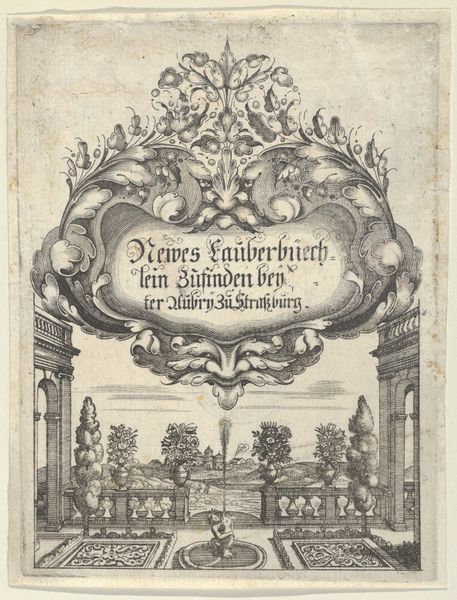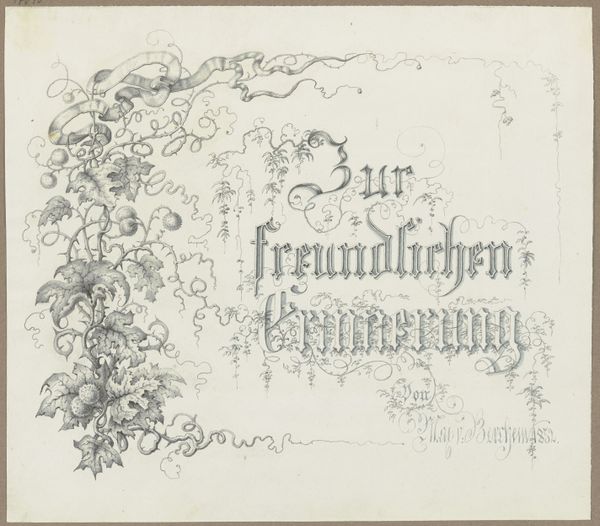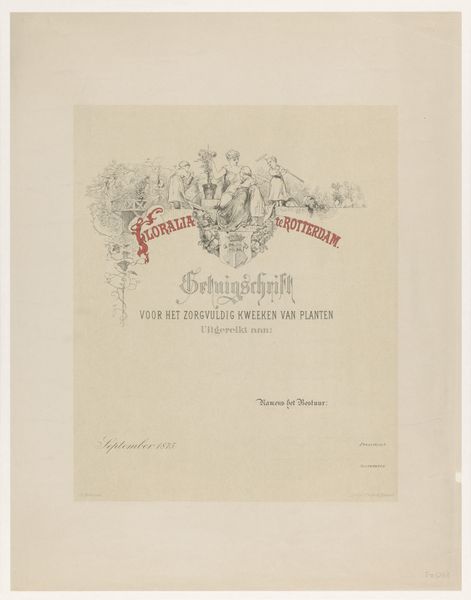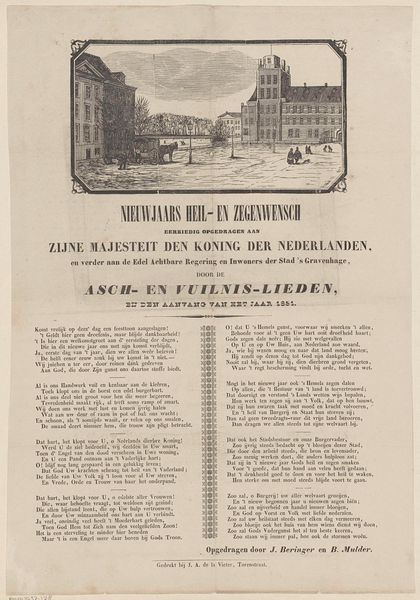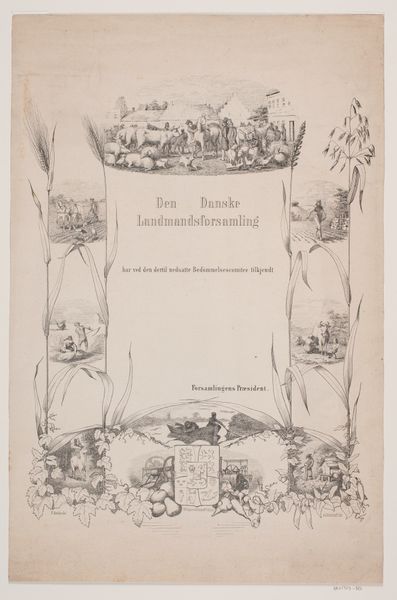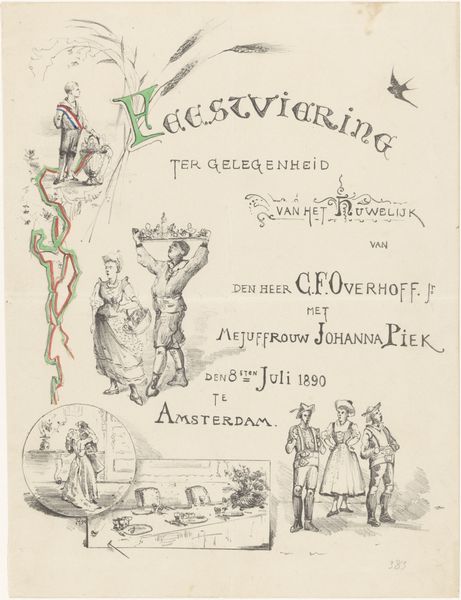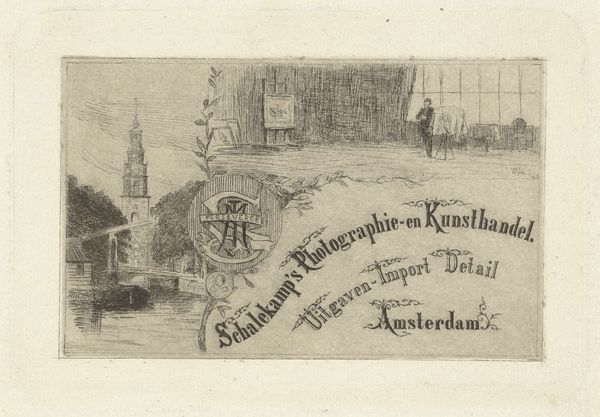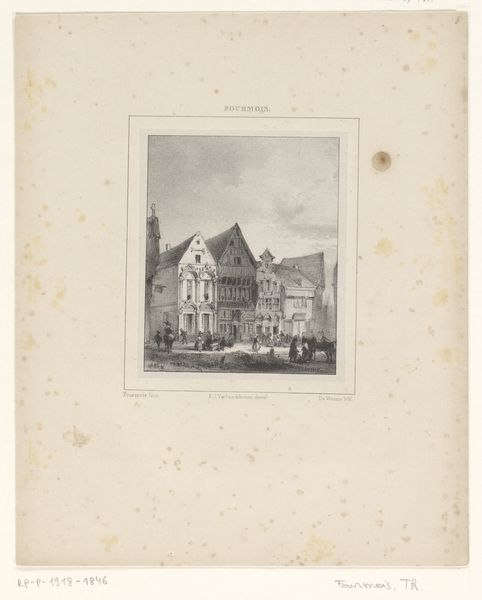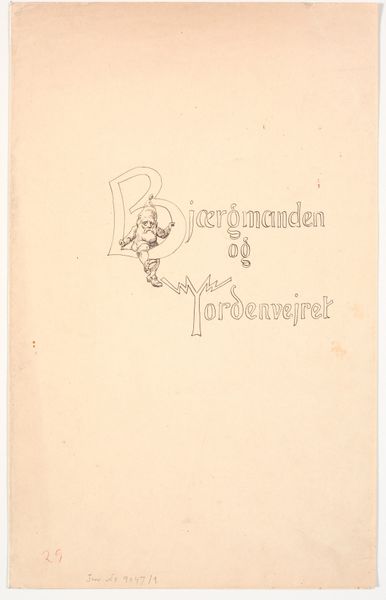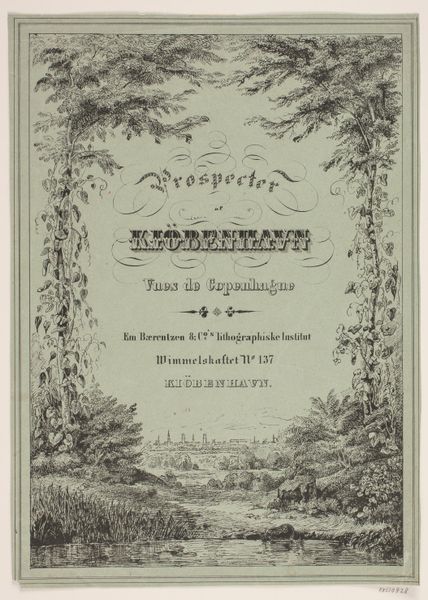
Titelblad til "Fredensborg - seks raderinger af Axel Holm" 1895
0:00
0:00
drawing, graphic-art, print, etching, paper
#
drawing
#
graphic-art
# print
#
etching
#
landscape
#
paper
#
script
#
cityscape
#
modernism
Dimensions: 245 mm (height) x 163 mm (width) (Plademål)
Curator: The overall feeling is ethereal, almost ghostly, with soft, hazy details and subtle shifts in tone. Editor: Indeed. This is "Titelblad til \"Fredensborg - seks raderinger af Axel Holm\"" from 1895, created by Axel Holm. As the title page for a series of etchings, it offers us insight into the artist's process and intent, the intersection of artistic production with the book trade. It's striking, especially given the socio-political context of printmaking at that time. Curator: Definitely. You can see how the very act of etching here, creating these finely detailed lines, it speaks volumes about labor. The materiality of the plate, the ink, the paper... It shows not just skill, but the means through which this kind of cityscape was made accessible, reproducible, commodifiable even. Editor: I agree that it reflects that broader moment where printed images were becoming so pivotal in shaping public perceptions. Think about how this image, mass-produced as a series, would contribute to the cultural understanding of Fredensborg itself, solidifying its position within the Danish identity. Curator: The way Holm presents the cityscape hints at that as well; the built form nestled in the embrace of natural forms. It begs us to contemplate the interactions between societal development and environment and perhaps their impacts to resources and cultural spaces as well. The print seems to underscore those complex relations by bringing our attention to their textures and shapes. Editor: Also consider where these images would be viewed - in homes, libraries, potentially shaping political conversations. The institutional history is vital here, because it influences reception and contextualizes its power to engage viewers beyond aesthetic pleasure. It could make ordinary people feel as if Fredensborg belonged to them as well, boosting feelings of community among diverse groups that identify with shared heritage and visual experience through prints like this! Curator: And it all begins from the specific artistic choices in crafting that very plate and carefully pulling a copy. So both processes work in symbiosis, bringing our modern interpretations ever closer with their initial production contexts Editor: Absolutely. Exploring the history behind it adds depth and richness to one's perspective, especially understanding the societal values attached back then in Fredensborg landscapes versus present-day outlooks... Curator: Indeed, it's an illuminating intersection that sheds new light.
Comments
No comments
Be the first to comment and join the conversation on the ultimate creative platform.
